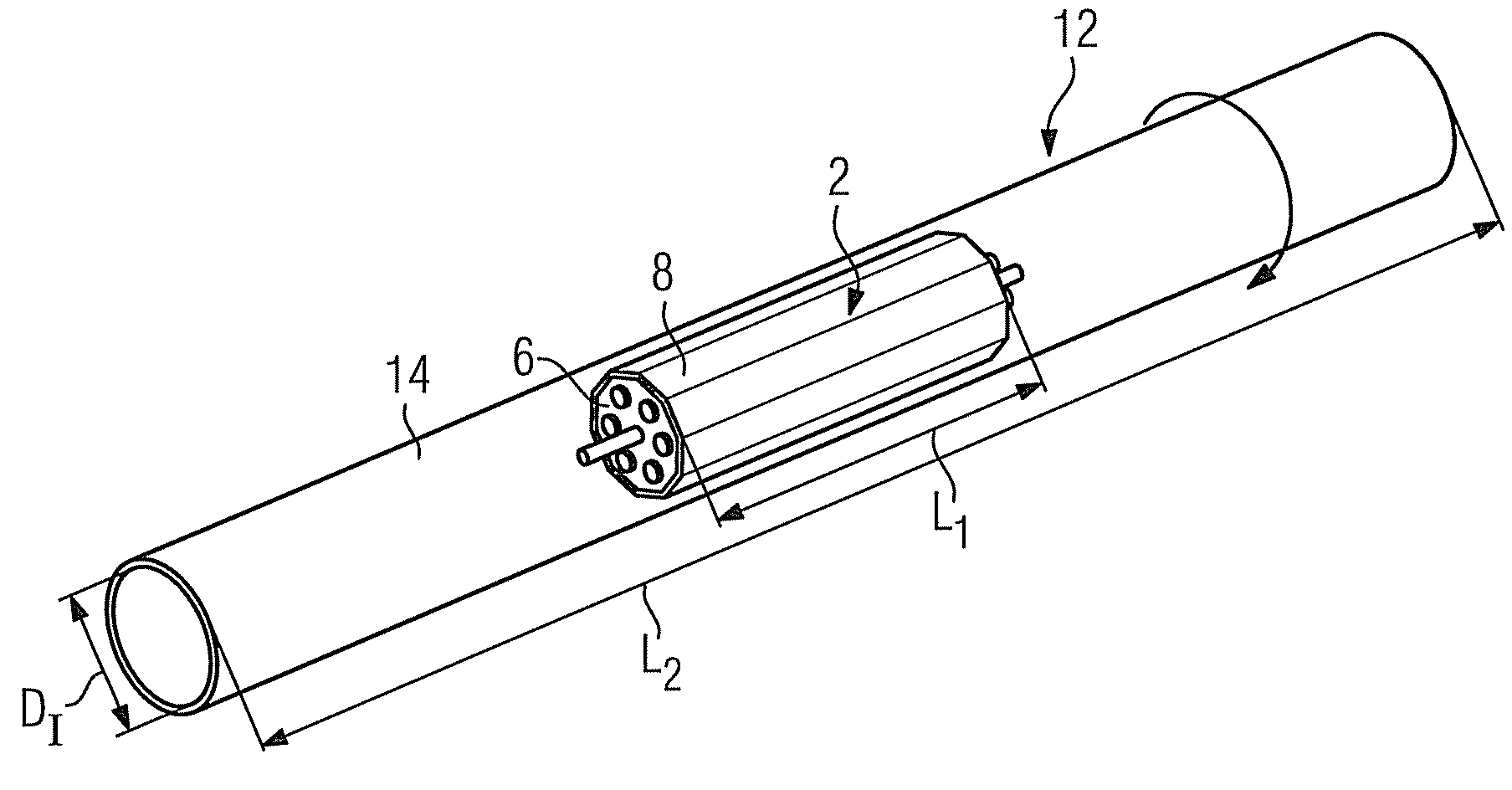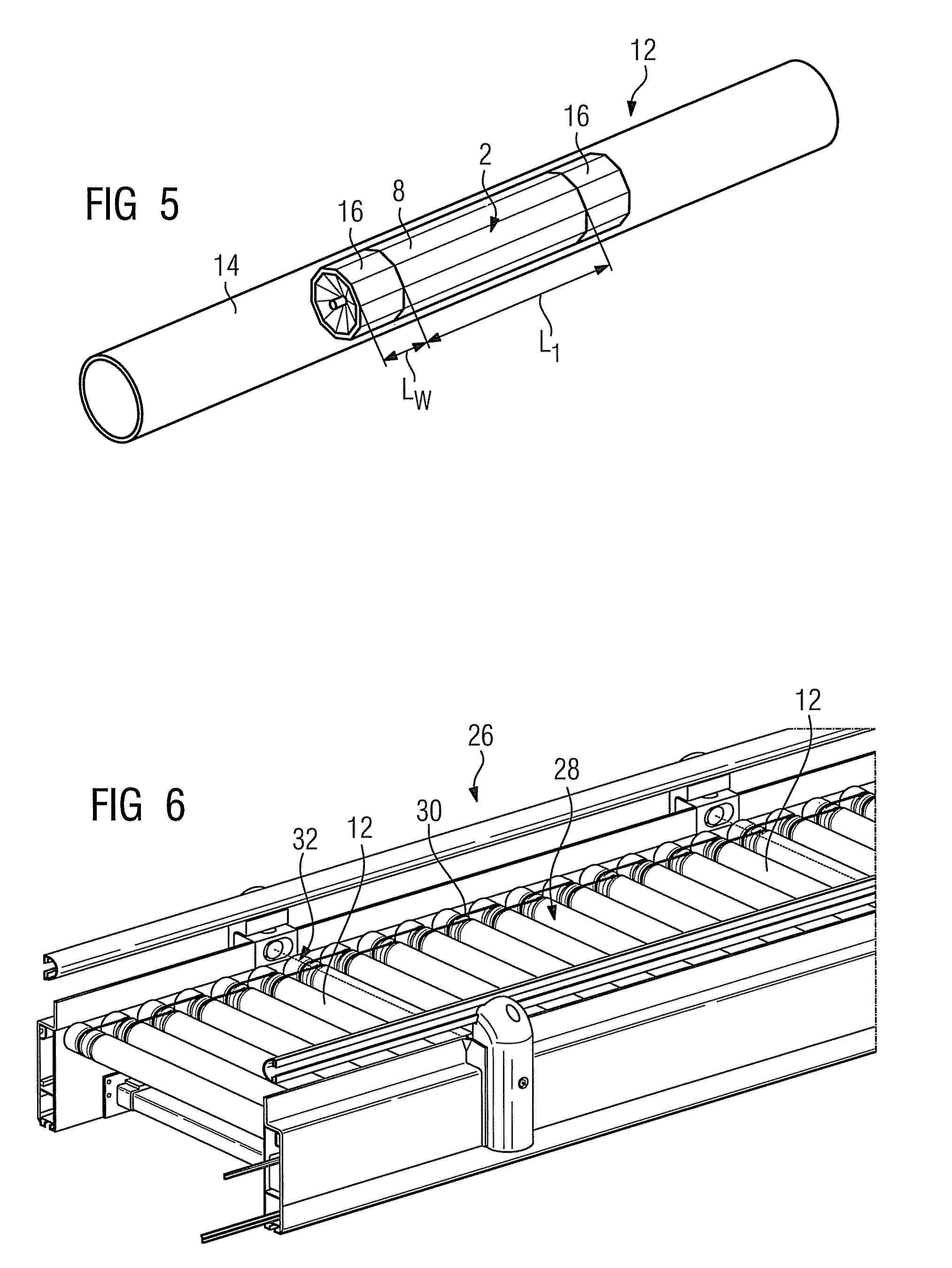Roller drive for a conveyor system and conveyor system
a technology of roller drive and conveyor system, which is applied in the direction of roller-ways, dynamo-electric machines, supports/enclosements/casings, etc., can solve the problems of increased torque and increased power loss of roller drive, and achieve reliable security, good thermal conductivity, and improved heat transfer
- Summary
- Abstract
- Description
- Claims
- Application Information
AI Technical Summary
Benefits of technology
Problems solved by technology
Method used
Image
Examples
Embodiment Construction
[0029]FIG. 1 shows a roller drive 2, which essentially comprises a stator 6 disposed on a shaft 4 and a rotor 8 enclosing the stator 6. The fixed stator 6 is made from an iron core, in which a number of windings 10 are disposed. The rotor 8 is disposed around the stator 6 in such a manner that it can rotate freely about the stator 6 as a result of the magnetic forces generated by the windings 10. The rotor 8 has an external diameter DR, which defines the diameter of the roller drive 2.
[0030]The roller drive 2 is deployed to drive a drive roller 12, which is part of a conveyor system (not shown in detail here). The drive roller 12 also comprises a roller tube 14, in which the roller drive 2 is positioned centrally in respect of a length L2 of the roller tube 14. The rotor 8 is connected by way of securing means (not shown in detail here) to the roller tube 14, so that during operation of the roller drive 2 the rotation of the rotor 8 also causes the roller tube 14 to rotate. The roll...
PUM
 Login to View More
Login to View More Abstract
Description
Claims
Application Information
 Login to View More
Login to View More - R&D
- Intellectual Property
- Life Sciences
- Materials
- Tech Scout
- Unparalleled Data Quality
- Higher Quality Content
- 60% Fewer Hallucinations
Browse by: Latest US Patents, China's latest patents, Technical Efficacy Thesaurus, Application Domain, Technology Topic, Popular Technical Reports.
© 2025 PatSnap. All rights reserved.Legal|Privacy policy|Modern Slavery Act Transparency Statement|Sitemap|About US| Contact US: help@patsnap.com



